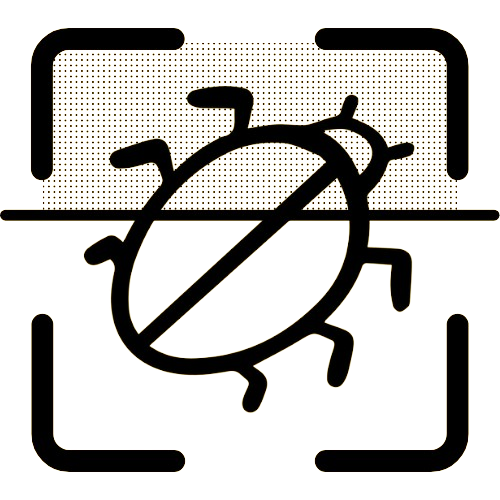Become a Bed Bug Detective: Expert Tips for Spotting Bed Bugs Early
October 02, 2025
Bed bugs can transform a peaceful home into a scene of distress if not identified and addressed promptly. Detecting these unwelcome guests early is crucial to prevent widespread infestations that can lead to costly exterminations. Early bed bug detection allows for timely intervention, minimizing discomfort and potential allergic reactions. In this article, we'll delve into the significance of early bed bug identification and provide expert insights to help you become a proficient bed bug detective.
Understanding Bed Bug Behavior
Grasping the behavior and lifecycle of bed bugs is critical for effective detection. Bed bugs are nocturnal pests that feed on human blood, primarily at night. They are adept at hiding in small crevices during daylight hours, making them notoriously difficult to detect. The adult bed bug is approximately the size of an apple seed, but their eggs and nymphs can be harder to spot.
Recognizing their feeding patterns and habitats can aid in narrowing down search areas. Bed bugs favor areas close to their food source—typically around mattresses, bed frames, and upholstered furniture. Understanding these behaviors is the cornerstone of successful bed bug management.
Common Signs of Bed Bug Presence
Identifying early bed bug signs is paramount for prompt action. Some common indicators include:
- Bite marks: Usually appearing in clusters or lines on the skin, these bites can cause itching and discomfort.
- Blood stains: After feeding, bed bugs often leave behind blood spots on bedsheets or pillowcases.
- Dark spots: Bed bug excrement appears as small dark spots, often on mattresses or upholstery.
- Shed skins and egg shells: As they mature, bed bugs shed their outer skins, which are often found near their hiding places.
If you notice any of these symptoms, it's time to consider a more detailed inspection or use specialized detection tools.
Effective Tools and Techniques for Detection
Detecting bed bugs requires keen attention to detail and sometimes the aid of specialized tools. Here are a few resources and methods to enhance your inspection efforts:
- Flashlight and magnifying glass: These basic tools can help illuminate and magnify tiny crevices where bed bugs hide.
- Bed bug detection strips: These are adhesive traps placed around suspected areas to capture bed bugs for verification.
- AI-Powered Detection Tools: Platforms like Bedbug-Scanner.com offer advanced solutions for analyzing images and accurately identifying bed bug infestations.
Tips for Identifying Bed Bug Hiding Spots
Being thorough and systematic in your search is key. Start by examining:
- Mattresses and bed frames: Focus on the seams, folds, and corners.
- Upholstered furniture: Check seams, tufts, and under cushions.
- Baseboards and electrical outlets: Bed bugs often hide in cracks and crevices near sleeping areas.
- Carpets and rugs: Pay close attention to the edges and beneath furniture.
A disciplined approach to inspection can reveal bed bugs in their early stages, offering the best chance for swift eradication.
How Bedbug-Scanner.com Enhances Bed Bug Detection
Modern technology can significantly streamline the bed bug identification process. Bedbug-Scanner.com provides an advanced, AI-powered tool to assist users in identifying bed bugs through image analysis. By uploading images of suspected infestations, users receive immediate feedback on the likelihood of bed bug presence, greatly enhancing the efficiency of the detection process.
Case Studies: Successful Detection and Prevention
Take, for instance, a hotel in New York that successfully averted a large-scale infestation. By utilizing early detection strategies and employing the Bedbug-Scanner tool, they identified and treated bed bugs before they could establish a significant foothold. Another example involves a family home that used regular monitoring combined with professional insights to maintain a bedbug-free environment.
These cases underline the effectiveness of combining vigilance with the right tools for early detection and prevention success.
Maintaining Vigilance: Regular Checks and Monitoring
Routine inspections are vital for ongoing prevention. In high-risk environments such as hotels, dormitories, and apartment complexes, regular checks should be scheduled to intercept any potential infestations. Understanding the early signs of bed bugs and establishing a consistent monitoring routine can make a substantial difference in maintaining a pest-free environment.
Encouraging family members or staff to report potential signs of bed bugs immediately can help contain the spread with quick response actions.
Conclusion: Protect Your Space with Expert Detection
Bed bugs may be elusive, but with the right knowledge and tools, you can outsmart them. By understanding their behavior and environments, regularly inspecting common hiding spots, and using tools like Bedbug-Scanner.com, you're well-equipped to detect bed bugs early and protect your home or business from infestations.
Proactively safeguarding your space ensures comfort and peace of mind. Don’t let these pests catch you off guard. Try Bedbug-Scanner.com for an advanced, modern approach to early bed bug detection.
